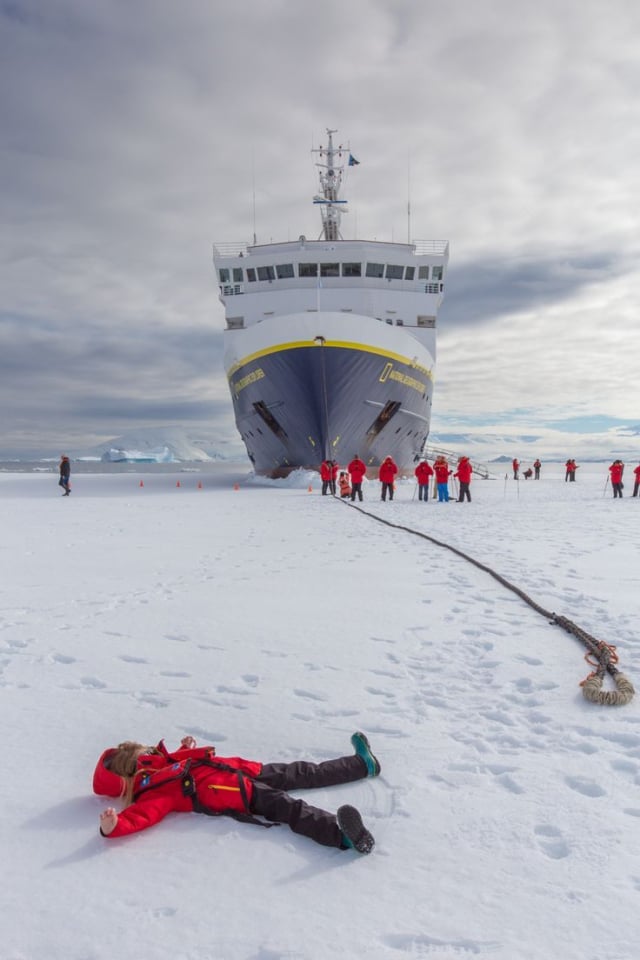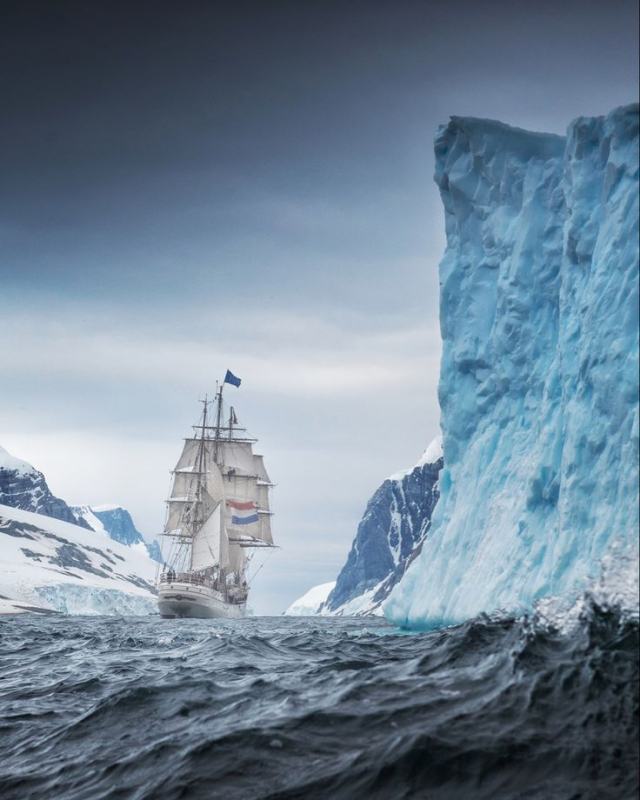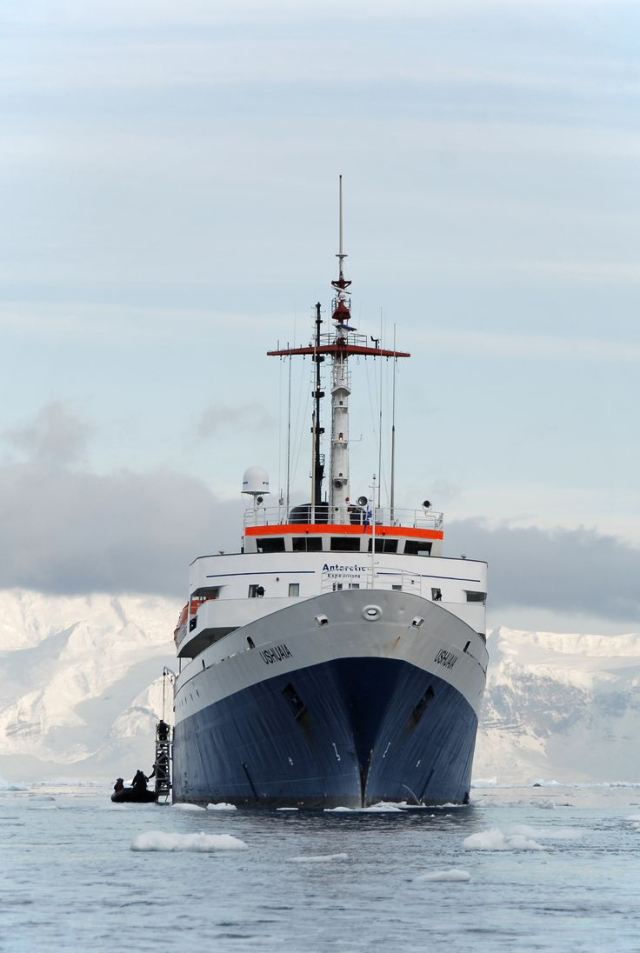Taken from Travel Baboo
Sailing through Antarctica offers a unique and challenging experience , allowing explorers to venture into the coldest and windiest continent on the planet . This vast frozen wasteland, with its endless expanses of ice, majestic mountains and rich wildlife including penguins, seals and whales, provides an unparalleled glimpse of the Antarctic environment . Whether on a research ship, icebreaker or expedition cruise, navigating these icy waters provides essential insight into the global importance of Antarctica.
The history of Antarctic navigation is full of stories of courage and perseverance . In the early 20th century, iconic explorers such as Ernest Shackleton and Roald Amundsen ventured into these unexplored regions, braving extreme conditions on their missions of discovery. Their exploits not only expanded geographic knowledge of the continent, but also highlighted the immense challenges and dangers of navigating this hostile environment. 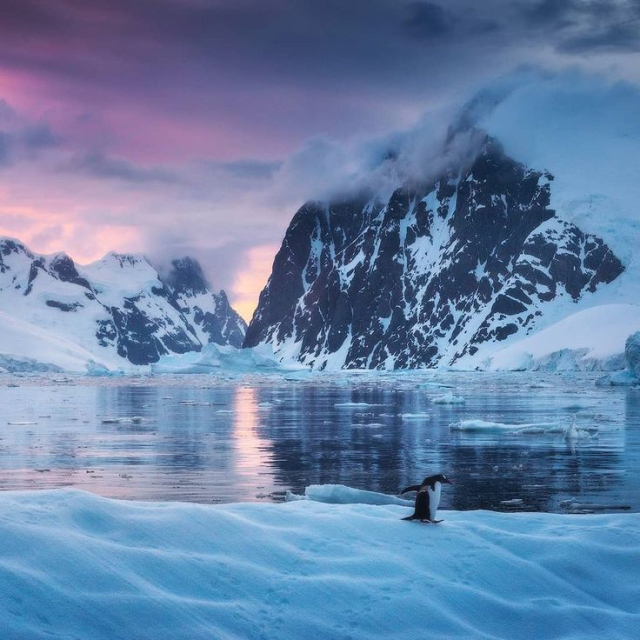
You may also be interested in: Sailing through the Bermuda Triangle
Today, navigation in Antarctica has advanced significantly thanks to developments in technology and maritime safety. Modern expeditions are equipped with high-tech navigation systems, state-of-the-art icebreakers and advanced scientific equipment that enable the collection of essential data on climate, marine life and glacier dynamics. Additionally, Antarctic tourism has grown , giving people from around the world the opportunity to experience the majesty of the white continent, always under strict regulations to protect the fragile environment .
Despite these advances, navigation in Antarctica faces significant contemporary challenges . Climate change is rapidly transforming the Antarctic landscape, reducing sea ice and increasing ocean temperatures, complicating navigation conditions. Furthermore, the increasing human presence , even under controlled tourism, raises important questions about the long-term conservation and sustainability of the continent. Thus, sailing through Antarctica not only represents an extraordinary adventure, but also a crucial responsibility to preserve one of the last pristine places on our planet.
You may also be interested in: Maritime rescue services
Main vessels that sail through Antarctica

- Icebreakers: These are vessels designed to navigate through sea ice. They are equipped with reinforced hulls and powerful engines to clear paths through ice sheets. These vessels are essential to keeping routes open and supporting other vessels in the region. Examples: RV Polarstern (Germany), USCGC Polar Star (United States), Xue Long (China).
- Scientific research vessels: These ships are equipped with specialized laboratories and equipment to conduct studies on climate, marine life, glaciers and other aspects of the Antarctic environment. Scientists aboard these vessels collect crucial data to better understand the continent and its global impact. Examples: RV Nathaniel B. Palmer (United States), Akademik Fedorov (Russia), RV Araon (South Korea).
- Expedition Cruises: Expedition cruises take tourists to Antarctica, offering a unique experience of adventure and education. These ships are designed to navigate in difficult conditions and provide comfort and safety to passengers while exploring the region. Examples: MS Fram (Norway), MV Ocean Endeavor (Canada), MS Roald Amundsen (Norway).

- Supply and logistics ships: These ships transport supplies, fuel and equipment to Antarctic research stations. They are vital for the maintenance and continued operation of scientific bases on the continent. Examples: Aurora Australis (Australia), RRS Ernest Shackleton (United Kingdom), Nuyina (Australia).
- Expedition yachts: Although in smaller numbers, some private and expedition yachts also venture into Antarctic waters. These yachts are specially designed and equipped to handle the extreme conditions of the area and offer a more intimate exploration experience. Examples: Hanse Explorer, M/Y Legend.
- Military vessels: The armed forces of several countries operate in the region to support scientific missions, conduct training exercises and demonstrate presence in this strategic region of the world. Examples: HMS Protector (United Kingdom), ARA Almirante Irízar (Argentina).
You may also be interested in: Boat rental without captain
Why sail to Antarctica?
Antarctica is a continent of extremes , where weather conditions can change dramatically in a matter of minutes. Fierce winds, low temperatures, and the constant presence of towering icebergs are just some of the challenges any sailor faces. However, it is precisely this unpredictability that attracts the most daring adventurers , those who see adversity as an opportunity to connect with nature in its purest and wildest form.
The Antarctic landscape is a mosaic of glaciers, snow-capped mountains and vast ice plains that stretch as far as the eye can see. The colors change with the light of the day , from the soft tones of sunrise to the intense hues of sunset, creating a visual spectacle that is difficult to describe in words. But beyond its beauty, Antarctica is also a refuge for unique wildlife: penguins, seals, whales and seabirds , which have adapted their lives to the harsh conditions of the white continent.
For those who decide to undertake the journey of sailing in Antarctica, it is essential to be well prepared . Preparation begins long before setting sail , with extensive research and choosing the right season . The southern summer, which runs from November to March, is the best time to explore the continent , as temperatures are milder and daylight hours are longer. It is during this season when the sea ice retreats, allowing safer access to coasts and areas of interest. 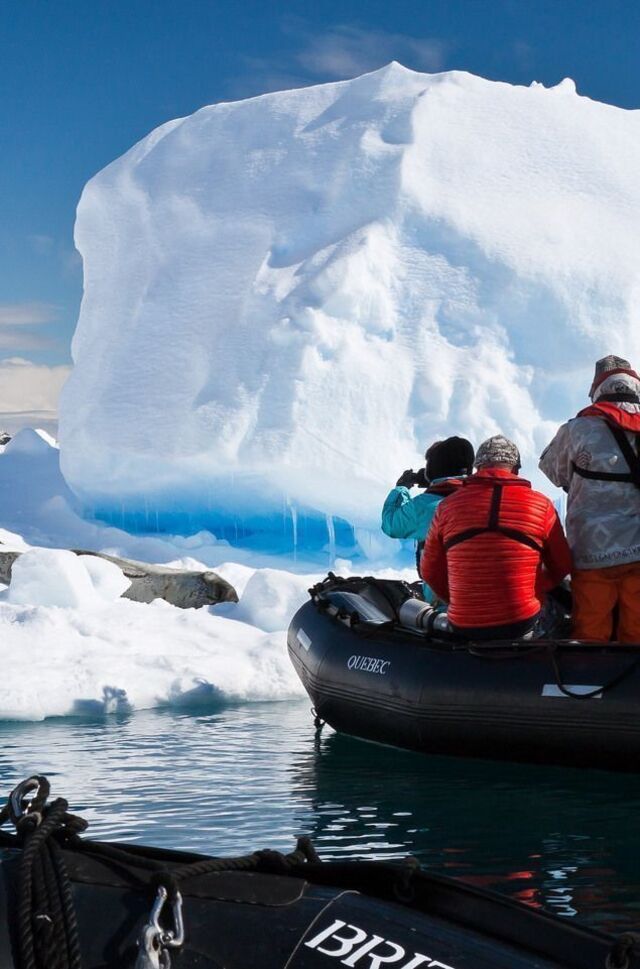
You may also be interested in: Intercontinental navigation
Equipment is another crucial aspect. Extreme conditions demand high-quality thermal clothing, as well as waterproof and cold-resistant footwear . It is also important to wear sunglasses with UV protection , as the reflection of light on snow and ice can be blinding. Additionally, having travel insurance that covers emergencies in remote areas is essential.
Safety on board is an absolute priority. Boaters should be familiar with icy water navigation techniques and have basic first aid knowledge . Likewise, it is advisable to travel in the company of experienced guides or on organized expeditions that have rescue and communication equipment. Antarctica is an unpredictable environment, and being prepared for any eventuality is essential to enjoy the adventure safely.
Finally, sailing in Antarctica not only involves a physical and logistical challenge , but also an environmental responsibility . This continent is one of the few places in the world that has remained relatively untouched by human activity. Therefore, it is vital to strictly follow conservation regulations , avoiding any type of contamination and respecting wildlife in their natural habitat.
We invite you to take a look at other articles at: https://yate.co/es/blog


